How England might play tactically against France

Sarina Wiegman and her formidable England team, began their European qualifying journey in April, facing off against opponents in Sweden and Ireland.
Following a narrow miss in Olympic qualification, Wiegman and her squad redirected their unwavering focus towards securing their spot in the upcoming Euro 2025, aiming to defend their hard-earned title.
In this article, we tactically preview England in preparation for their game against France by looking at the game against Sweden.
England’s formations
The Lionesses took on Sweden at Wembley, aiming to get their campaign off to a flying start. Wiegman opted for her accustomed 4-3-3 formation. A strong line-up that combined her regular starters such as Lucy Bronze and Mary Earps, alongside in-form players like Grace Clinton and Lotte Wubben-Moy.
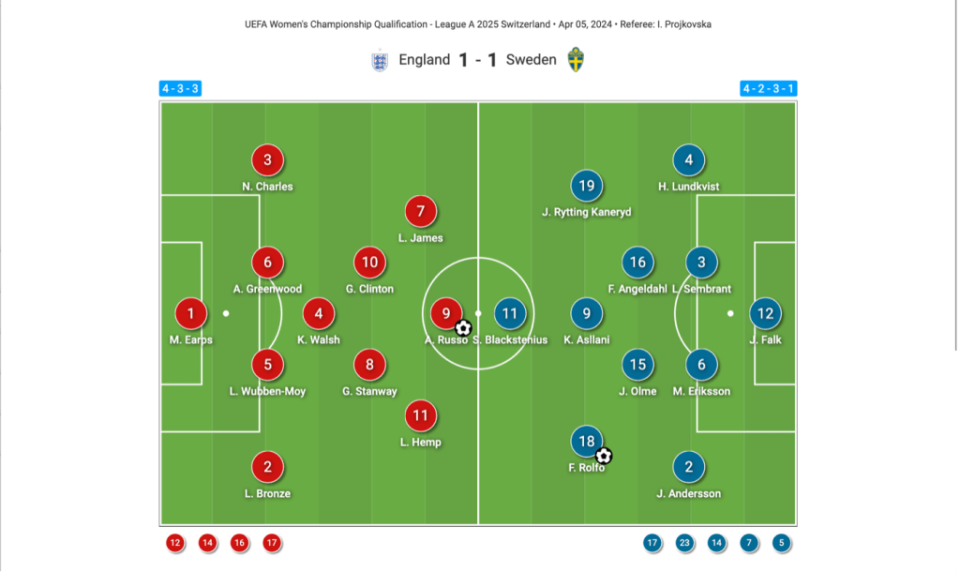
Sweden set up in a 4-2-3-1 formation. A dangerous frontline of Johanna Rytting Kaneryd, Stina Blackstenius and Fridolina Rolfö joined reliable captain Magdalena Eriksson in an equally strong starting XI.
Throughout the match, England were extremely versatile in their attacking options, looking to play both centrally and out wide. With Sweden entrusting a man-marking system in the midfield, England were often closed down in the central region and therefore looked to play out wide instead.
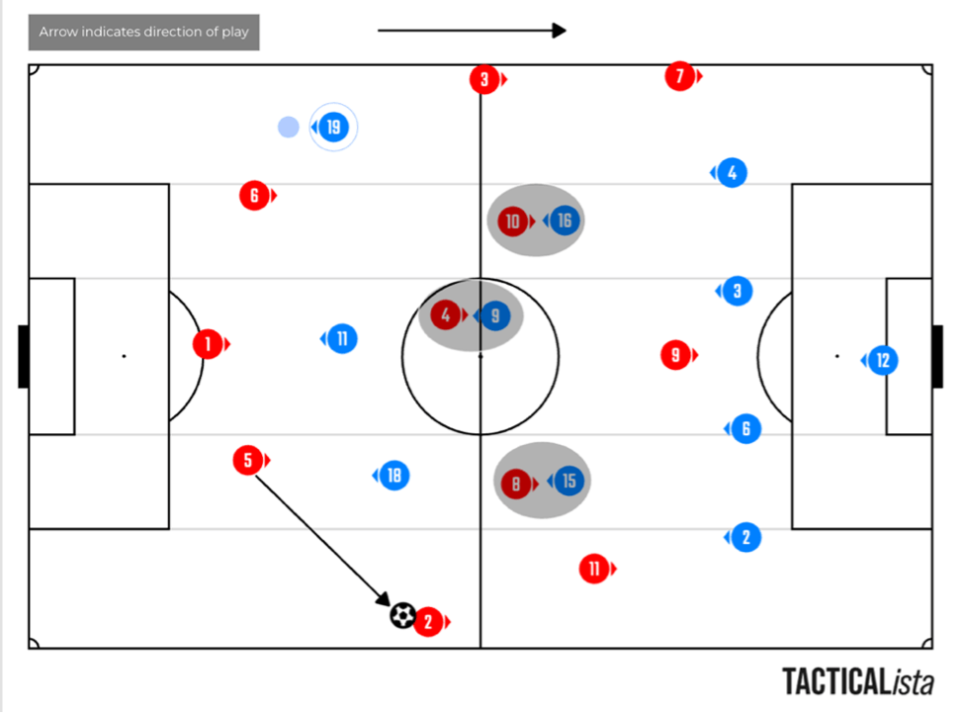

When we look at how England set up in the game against Ireland, we see the same 4-3-3 formation, yet not the same personnel. The front three remains the same, yet Ella Toone and Jess Park join Keira Walsh in the midfield. A return for captain Leah Williamson alongside Jess Carter are the replacements in the England backline, with Hannah Hampton also replacing Earps. Ireland operate in a 5-4-1 formation, dissimilar to the 4-3-3 we saw Sweden utilise.
England’s build-up to attack
With the full-backs positioned higher up the pitch, the relationship between Bronze and the corresponding winger, as well as the midfielder that would come across to support, was detrimental to creating attacking avenues for England. Noticing the narrow backline that Sweden had
entrusted, England capitalised on the space that opened up on the flank. Both Lauren Hemp and Lauren James looked to drive at defenders and put accurate crosses into the box, leading to Alessia Russo’s diving header that put England 1-0 up in the game.
With both teams looking at times to build up play through the central region, the midfield battle became the key component of the game, creating a high tempo match determined by loose passes and space
capitalisation.
How England construct their attacks
A key strength of both Russo and James’ play that we often see is their hold-up play, and Wiegman implemented this when necessary in the game. With the midfielders marked out of the game on occasions, Russo and James would drop deep to support build-up and look to drag players out of position to create space for others to capitalise on.
Even when not effective at that specifically, having Russo and James drop deep won England fouls that took the pressure off them as Sweden started to create more attacking opportunities.
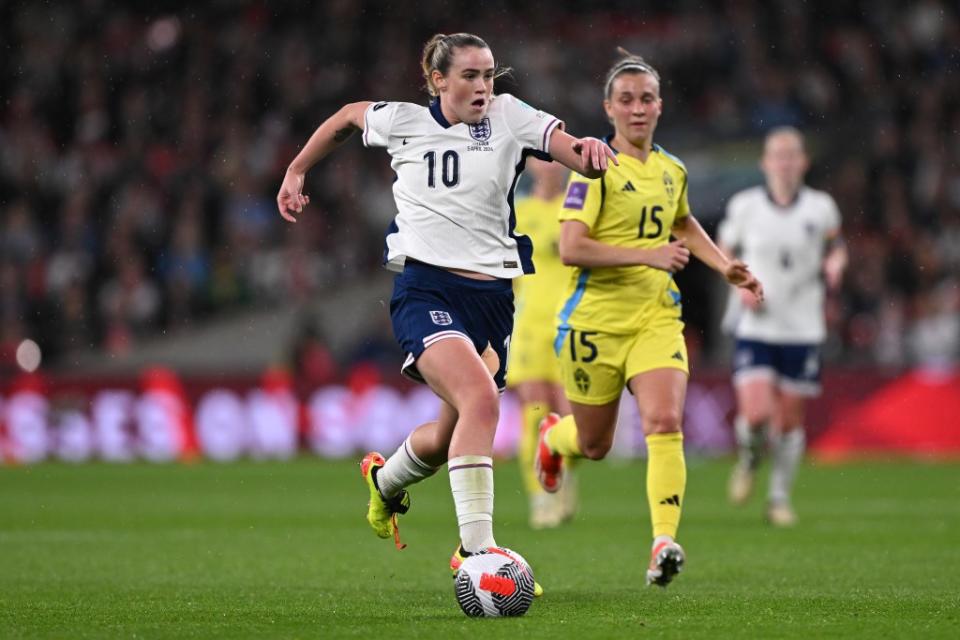
Pivotal role for midfield
Although the midfield played a pivotal role, space opened up all over the pitch for England to exploit, allowing them to also look out wide when attacking. When they switched it from one flank to the other quickly with one long ball, they got their reward. Walsh found Bronze on the far side, who could head down, and with Ireland failing to clear their lines effectively, James could slot it past Courtney Brosnan to give England the 1-0 lead.
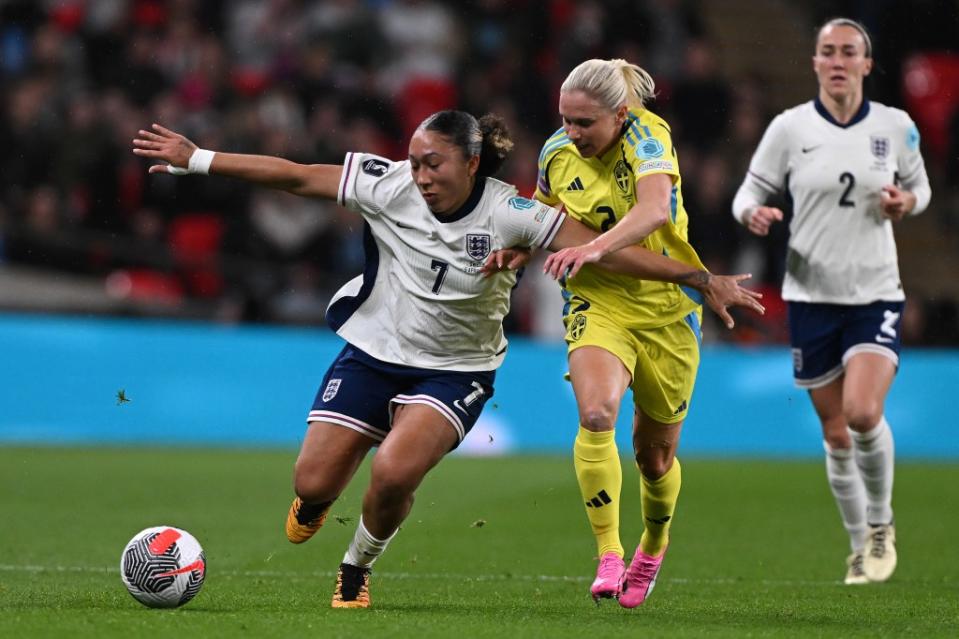
The relationship between the full-back in Bronze and the winger in James also benefited England in creating opportunities out wide. In the game against Sweden, England rarely looked to attack through 1v1 situations with the winger and the opposition full-back. Yet in this game, Hemp showed little hesitancy to take on Aoife Mannion and drive into the box, looking for the cut back.
England’s weaknesses
Sweden looked to capitalise on the weaknesses of the England team that occurred as a result of the tactics utilised. Rolfö and Blackstenius exploited spaces on the flanks created by the position of the full-backs higher up the pitch, dragging Alex Greenwood out of position and opening up space in the box.
England were the orchestrators of their own downfall on occasion. Failing to clear their lines in their defensive third, England awarded space for Rosa Kafaji to cross and Rolfö to head the equaliser in past
Earps.
Sweden provided England with a complex challenge, matching them stride for stride. Both teams were versatile in attack yet remained defensively solid, proven through the evenly-matched contest that
entailed. The real issue for England in this game was their decision-making, with the final pass or decision lacking on several occasions.
England vs France
France have started their qualifying campaign extremely well. A win against Ireland in the first game followed by a second win against tough opponents Sweden. France remain top of the group and will look to extend their lead at the top by securing victory against England. In their game against Sweden, a team that appeared to evenly contest against England and uses a similar tactical setup to them, France set up
in a 5-3-2 formation.
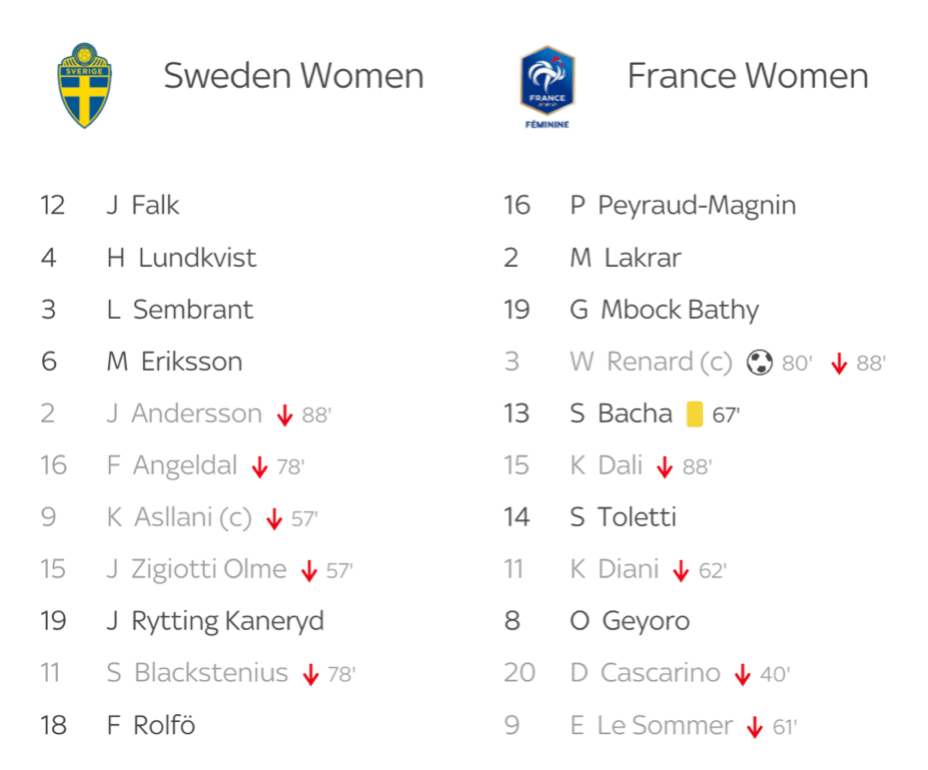
France play with a high intensity from the offset, an extremely attack-minded team always looking to get forward. They prioritise getting their wide players on the ball, meaning the opposition’s full-backs need to be switched on defensively. They can catch a team out who likes to get their full-backs involved in the attack, capitalising on the space that opens up on either flank.
To get their wide players on the ball they often rely on long balls in behind — this means teams that play a high backline must be aware of this to prevent being caught out. They can also get their wide players on the ball through quick passes from one flank to the other. They look to utilise the strength of their players, with many extremely good on the ball, able to play intricate, quick passes to succeed in their build-up play. Their striker (Eugénie Le Sommer) often drops deep and is involved in the build-up play, holding up the ball to create space for others.
France in the final third
When they get in the final third, France like to get a lot of players in the box. Rather than delaying the final pass or shot, they look to play it first time, emphasising their attack-minded playstyle. This can, however, result in some of their passes or crosses being over or under hit. Despite being likely to create a lot of attacking opportunities in the game, their final shot is often weak or lacking as they look to take it quickly. Although they rarely look to take shots from the edge of the box, when they do they are likely to test the goalkeeper.
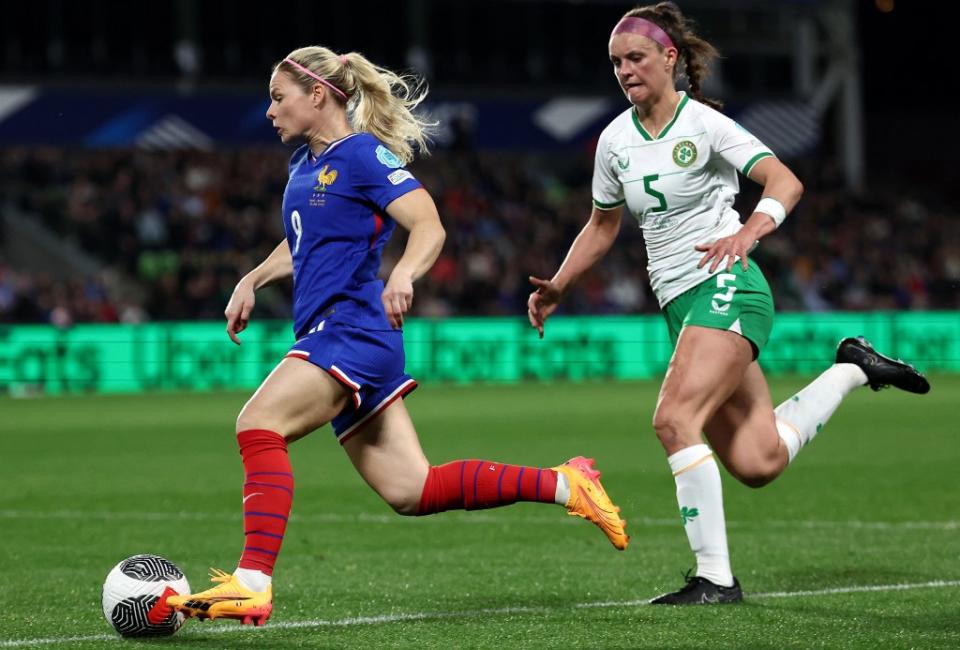
By having a significant amount of the possession, they frustrate the opposition and prevent them from having time on the ball to create attacking opportunities. They stay switched on in the second phase of
set pieces — by winning the ball back when the other team is often switched off, they can catch the opposition out defensively. This lead to their goal against Sweden late in the game. Out of possession they are defensively solid, dealing with balls in behind extremely well.
France in possession
France like to have a lot of possession in the game, and therefore their emphasis is on constantly winning the ball back when they lose it. They look to press every single player on the ball, putting 2-3 of their players on one opposition player, forcing them into quick passes where they are more likely to lose possession. This means that the game can often seem scrappy, with lots of loose balls, passes and tackles, with both teams looking to win the midfield battle. This is something we saw when England played Sweden.
Rather than letting teams get forward, they prevent the opposition getting into their box, looking to win the ball in midfield or through one of their defenders stepping out to win loose balls.
When their defenders step out of the backline to win the ball, they can be exposed in counter-attack scenarios if they lose the ball. Their players do extremely well in 1v1 situations, however, so they often
survive these scares. By playing three centre-backs they improve their defensive solidity, remaining switched on for the full duration of the game.
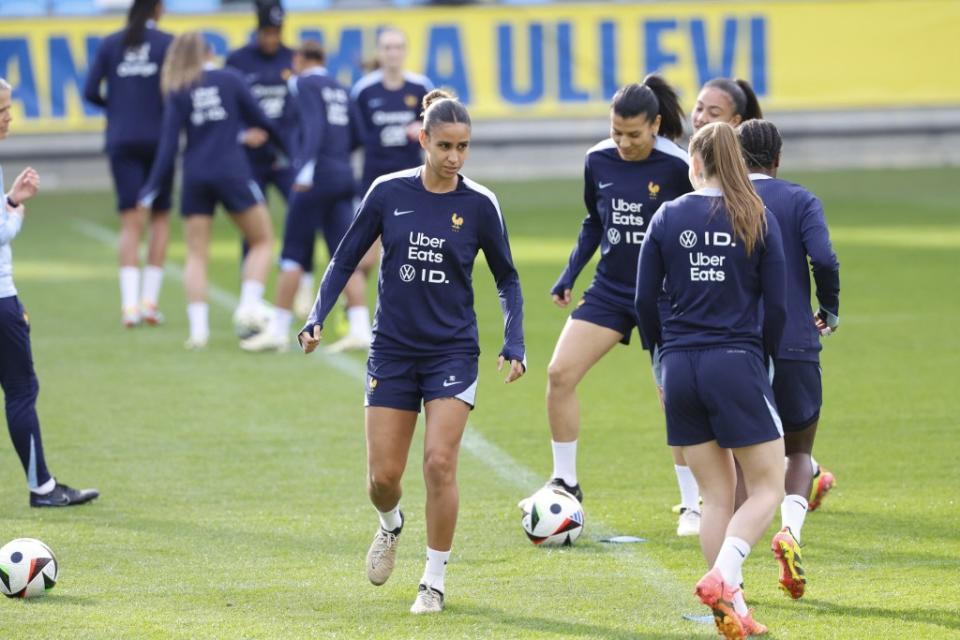
How will England look to achieve victory against France?
Winning the midfield battle will be key for England, as France will utilise their good ball players in the central regions to get forward. England will need to keep control of the ball in this area. If they lose it, France will look to be on the attack quickly and England may be caught out. England will need to ensure that they are defensively solid, and be aware of their fullbacks getting forward, as they may be caught out when France look to attack.
If looking to play a high backline, they must be aware of runs in behind. They must also stay switched on from set pieces, as this is where France caught Sweden out. England’s key attacking avenue will likely come from catching France out quickly when they win the ball in the midfield or further forward.
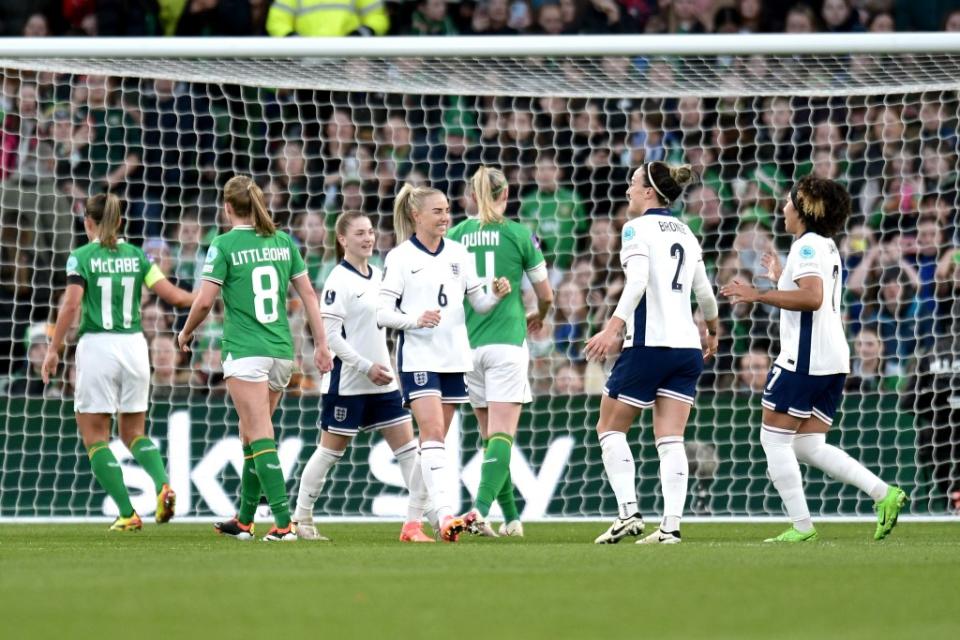
As they possess a strong backline, when attacking opportunities present themselves, England need to make sure they take them. Failing to take good opportunities may present England from getting a result in this game. The same applies for their passing in the game. They lose the ball too easily and they may risk being exposed by the strong French attack.

 Yahoo Sports
Yahoo Sports 
